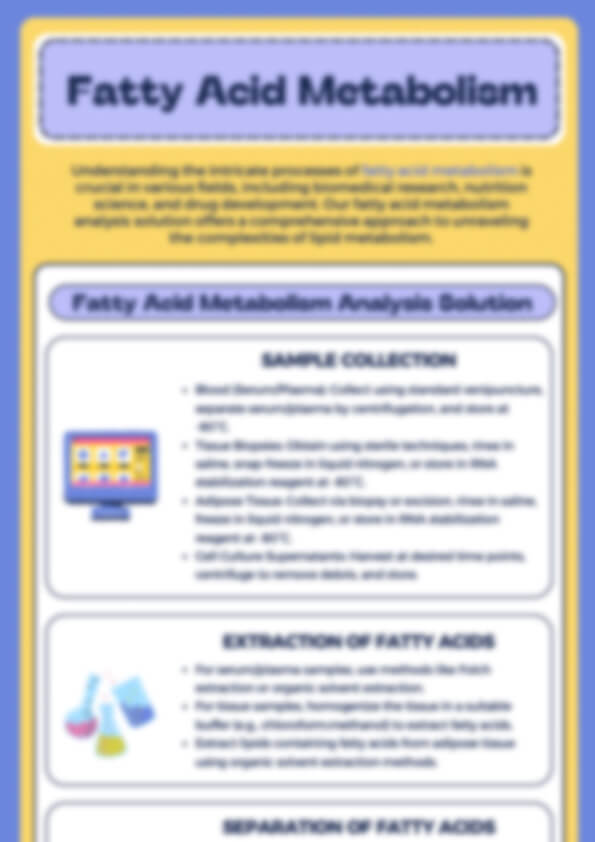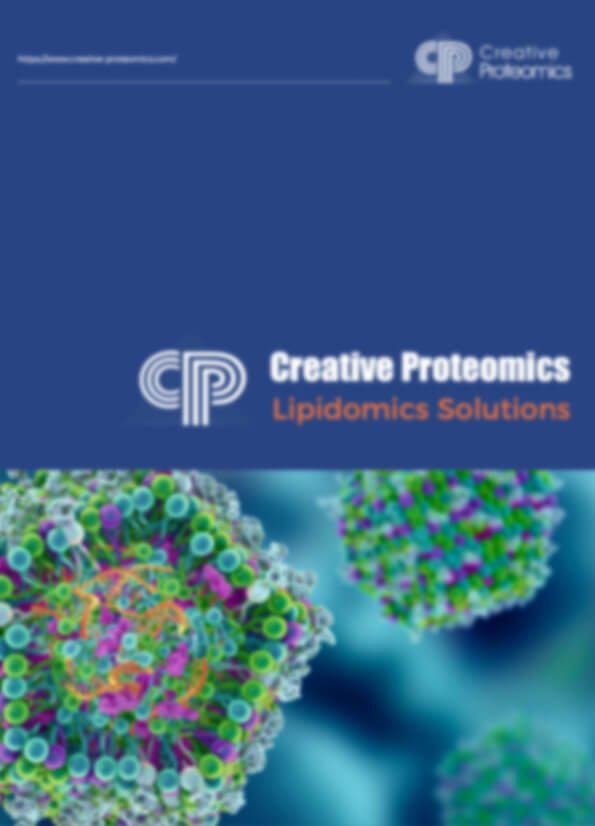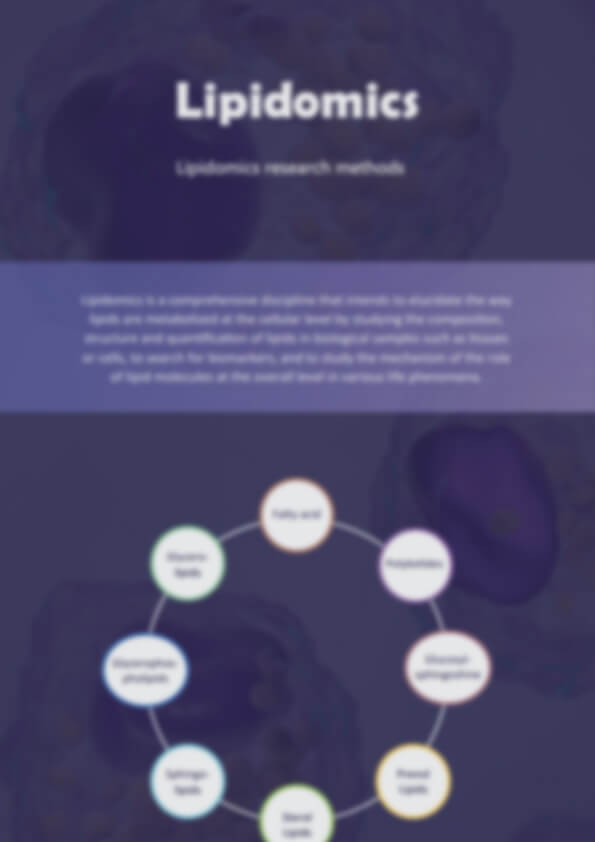Medium- and Long-Chain Fatty Acid Profiling Service
Fatty acid profiling is no longer optional—it's essential. Whether you're developing a nutritional product, studying disease biomarkers, or validating a drug candidate, our Medium- and Long-Chain Fatty Acid Profiling Service equips you with accurate, actionable data.
As a trusted CRO, Creative Proteomics offers:
Quantification of 40+ MCFAs and LCFAs: including capric acid (C10:0), palmitic acid (C16:0), arachidonic acid (C20:4n6), and docosahexaenoic acid (C22:6n3).
We also offer complementary services to support full lipidomic profiling:
Saturated Fatty Acids Analysis
Very Long Chain Fatty Acids Analysis
Free Fatty Acids (FFAs) Analysis Service
Submit Your Request Now
×- Why Analyze Fatty Acid
- Our Solution
- Tech
- Workflow
- Advantage
- Platform
- Metabolist Coverage
- Sample Requirement
- Delivery
- Case
- Publication
What Are Medium- and Long-Chain Fatty Acids?
Medium-chain fatty acids (MCFAs) have carbon chains between 6 and 12 atoms. Long-chain fatty acids (LCFAs) are slightly longer, ranging from 13 to 21 carbon atoms. These molecules play a vital role in energy production, cell membrane structure, and signaling processes.
Classification of Fatty Acids by Chain Length
- Short-chain (C2–C6)
- Medium-chain (C6–C12)
- Long-chain (C13–C21)
- Very long-chain (C22 and above)
These different types serve distinct biological roles. MCFAs, for instance, are rapidly digested and absorbed in the gut. They're quickly converted into energy, making them especially useful in clinical nutrition and ketogenic therapies.
LCFAs, on the other hand, play essential roles in:
Hormone synthesis
Cell membrane stability
Inflammation regulation
Importantly, MCFAs can cross the blood-brain barrier, offering an alternative energy source to glucose in the brain. LCFAs, by contrast, cannot—making MCFAs a promising target for research in neurodegenerative diseases.
Understanding the differences between these fatty acids helps researchers develop targeted supplements, precision diets, and lipid-based therapies for metabolic and neurological disorders.
Why Fatty Acid Profiling Matters More Than Ever
Fatty acid profiling reveals detailed insights into a person's or sample's lipid metabolism. This is crucial in:
- Nutritional studies: Tracking how fats affect energy and metabolism.
- Pharmaceutical R&D: Validating lipid-based drug delivery systems.
- Disease research: Understanding links between lipid abnormalities and conditions like metabolic syndrome, cardiovascular diseases, and IBS-D.
For researchers, fatty acid profiling provides a deeper understanding of how lipids function in different biological systems. By measuring levels of individual fatty acids, scientists can track the metabolic state of a sample with high accuracy.
In nutritional studies, profiling reveals how different fats influence energy levels and metabolic pathways.
In pharmaceutical development, it supports the formulation of lipid-based drug carriers and verifies stability.
In disease research, it identifies lipid imbalances linked to disorders such as metabolic syndrome, IBS-D, and cardiovascular diseases.
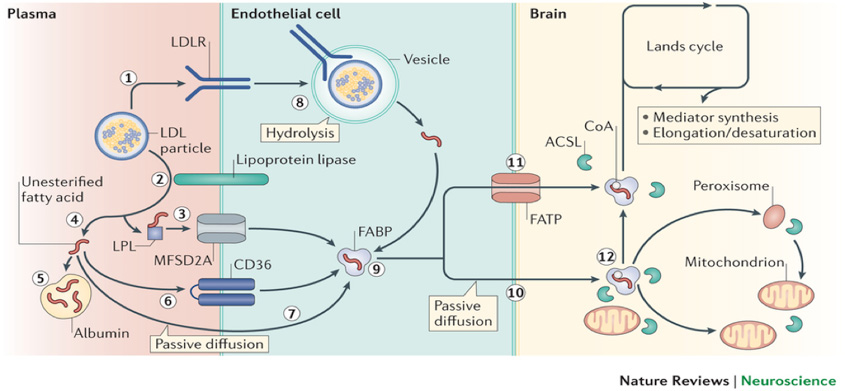
Accurate GC-MS Quantification for Plasma, Tissue, and Cell Samples
Understanding the profile of fatty acids is critical in both clinical and research settings. Fatty acids—key components of lipids—serve as major energy sources and cellular building blocks.
At Creative Proteomics, we provide precise GC-MS-based quantification of medium- and long-chain fatty acids in a variety of biological matrices, including plasma, tissue, and cultured cells. Our service enables:
- Accurate detection of over 40 fatty acid species with high sensitivity
- Quantitative reporting in µM or µg/mg (tissue) units
- Low sample volume requirements, ideal for precious or limited specimens
- Comprehensive output, including molecular weight, CAS number, and CV values below 10%
Whether you're conducting lipidomic biomarker discovery or validating a metabolic treatment, our GC-MS platform offers the reproducibility, specificity, and throughput needed to advance your research with confidence.
Techniques That Power Accurate Fatty Acid Profiling
Fatty acid profiling can be performed using either LC-MS or GC-MS platforms. At Creative Proteomics, we leverage GC-MS for its superior sensitivity and reliability:
- GC-MS (Gas Chromatography–Mass Spectrometry): Highly accurate, especially for volatile fatty acid methyl esters.
- LC-MS (Liquid Chromatography–Mass Spectrometry): Suitable for analyzing non-volatile or thermally unstable compounds.
Why GC-MS for Fatty Acid Quantification?
Conventional HPLC methods struggle to detect fatty acids due to weak UV absorbance and lack of chromophores. In contrast, Gas Chromatography–Mass Spectrometry (GC-MS) provides:
- Higher sensitivity and specificity through structural molecular ion detection
- Reliable quantification even in complex biological matrices
- Broad analyte coverage, including both MCFAs and LCFAs
At Creative Proteomics, we've developed a robust GC-MS workflow for the precise identification and quantification of fatty acids in plasma, tissue, or cultured cells.
Workflow
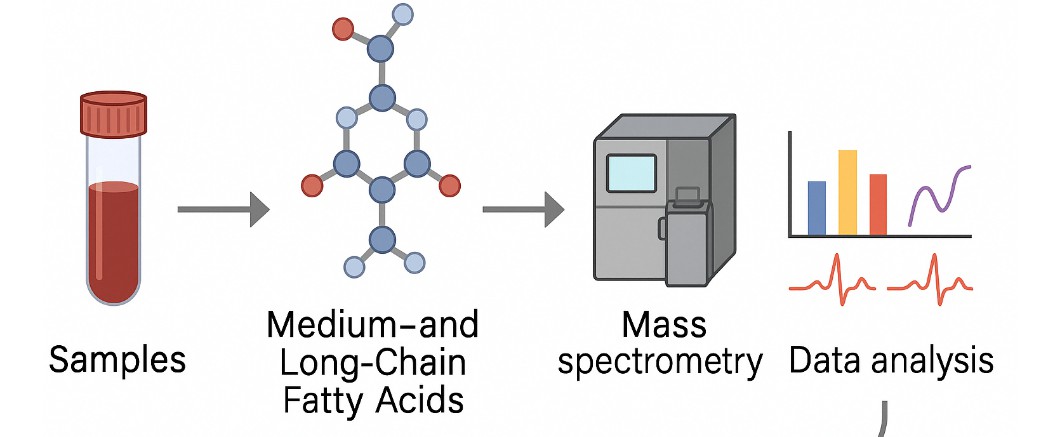
Service Advantages: Why Choose Creative Proteomics for Fatty Acid Profiling?
When it comes to fatty acid analysis, accuracy, coverage, and reliability make all the difference. Creative Proteomics delivers on all fronts—offering a comprehensive profiling service designed for real-world research and industrial needs.
What Sets Us Apart?
Unlike many providers that offer generalized lipid analysis, Creative Proteomics specializes in fatty acid subtypes—from short-chain to very long-chain fatty acids. Our Medium- and Long-Chain Fatty Acid Profiling Service is built on a validated GC-MS platform that delivers reproducible, publication-ready results across sample types.
Here's how we outperform other CROs:
| Feature | Creative Proteomics | Standard Industry Offering |
|---|---|---|
| Number of Fatty Acids Covered | 40+ MCFAs and LCFAs | 20–30 on average |
| Instrumentation | Dedicated GC-MS for lipidomics | General LC-MS or HPLC |
| Turnaround Time | Fast reporting with CV<10% | Often >10% CV, slower delivery |
| Report Depth | Includes CAS#, formula, MW, CV% | Limited metadata or basic only |
| Sample Flexibility | Plasma, tissue, cells — low input accepted | Stricter input thresholds |
| Complementary Services | Total Fatty Acids, Saturated FAs, Fatty Acids Metabolomics | Not always integrated |
Expert Support & Tailored Solutions
End-to-End Assistance: From experimental design to data interpretation, our lipidomics team is available throughout your project.
Custom Analyte Panels: Need to add or exclude certain fatty acids? No problem. We tailor the detection range to your study goals.
Regulatory-Ready Data: Output format meets submission standards for pharma research.
Platform

Agilent 1290-6470 (image source: agilent.com)

Sciex QTRAP 6500+ (image source: Sciex QTRAP 6500+)
Fatty Acids Quantified
A selection of over 40 fatty acids are covered, including:
| Medium-chain and Long-chain Fatty Acids Quantified in This Service | ||
|---|---|---|
| Arachidonic acid (C20:4n6) | Arachidic acid (C20:0) | Butyric acid (C4:0) |
| Behenic acid (C22:0) | cis-11-Eicosenoic acid (C20:1) | cis-11,14-Eicosadienoic acid (C20:2) |
| cis-13,16-Docosadienoic acid (C22:2) | cis-10-Pentadecenoic acid (C15:1) | cis-10-Heptadecenoic acid (C17:1) |
| cis-8,11,14-Eicosatrienoic acid (C20:3n6) | cis-11,14,17-Eicosatrienoic acid (C20:3n3) | cis-4,7,10,13,16,19-Docosahexaenoic acid (C22:6n3) |
| cis-5,8,11,14,17-Eicosapentaenoic acid (C20:5n3) | Capric acid (C10:0) | Caproic acid (C6:0) |
| Caprylic acid (C8:0) | Linoleic acid (C18:2n6c) | Elaidic acid (C18:1n9t) |
| Erucic acid (C22:1n9) | g-Linolenic acid (C18:3n6) | Heneicosanoic acid (C21:0) |
| Heptadecanoic acid (C17:0) | Lauric acid (C12:0) | Linolenic acid (C18:3n3) |
| Lignoceric acid (C24:0) | Linolelaidic acid (C18:2n6t) | Myristic acid (C14:0) |
| Myristoleic acid (C14:1) | Nervonic acid (C24:1) | Oleic acid (C18:1n9c) |
| Pentadecanoic acid (C15:0) | Palmitic acid (C16:0) | Palmitoleic acid (C16:1) |
| Stearic acid (C18:0) | Tricosanoic acid (C23:0) | Tridecanoic acid (C13:0) |
| Undecanoic acid (C11:0) | ||
Sample Requirements
| Sample Type | Standard Input | Minimum Input |
|---|---|---|
| Plasma | 100 µL | 50 µL |
| Tissue | 50 mg | 30 mg |
| Cells | 2×10⁷ | 5×10⁶ |
Deliverables
You'll receive a comprehensive technical report that includes:
- Full experimental protocol and GC-MS parameters
- Quantified analytes in μM or μg/mg (tissue)
- Coefficients of variation (CV) typically<10%
- Complete fatty acid data including:
- Name, abbreviation, molecular weight
- Formula and CAS number
Case Study: Client Success Story
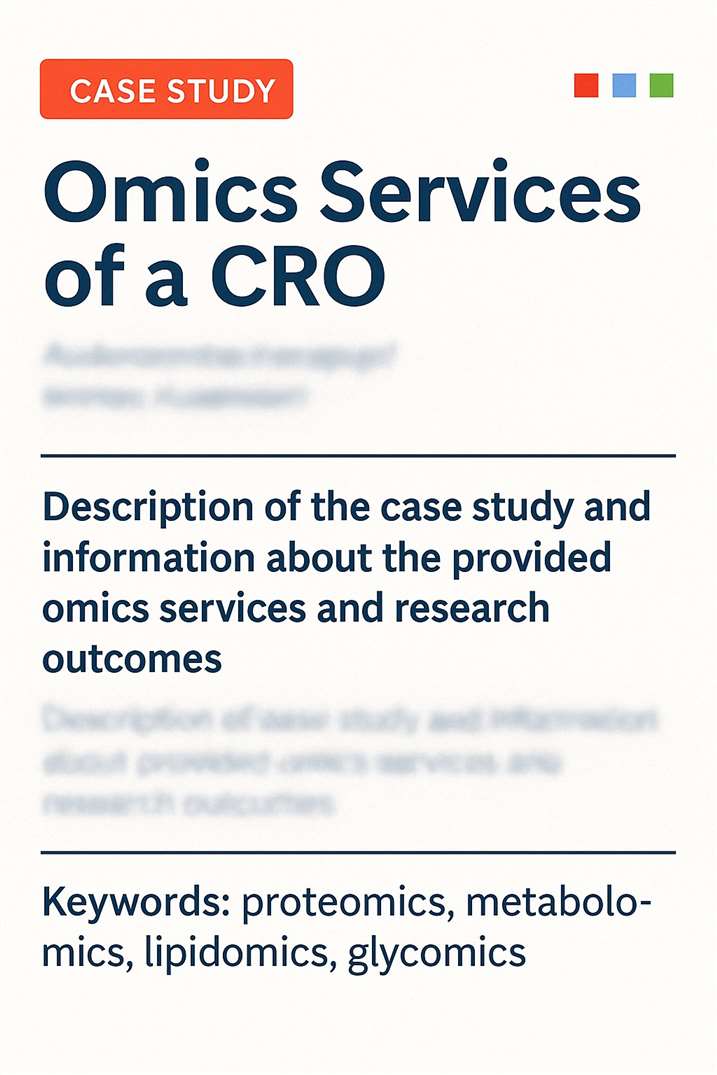
Calcium homeostasis and stable fatty acid composition underpin heatwave tolerance of the keystone polychaete Hediste diversicolor
Fatty Acid Stability Supports Heatwave Resilience in Hediste diversicolor
Journal: Environmental Research
https://doi.org/10.1016/j.envres.2021.110885
- Background
- Methods
- Findings
- Conclusion
With climate-induced marine heatwaves becoming increasingly intense and prolonged, understanding how marine organisms adapt is critical. Hediste diversicolor, a keystone estuarine polychaete and a promising aquaculture species, was selected to assess thermal tolerance mechanisms under simulated heatwave conditions.
Researchers exposed H. diversicolor to a 30-day heatwave scenario (30 °C) compared to a summer baseline (24 °C). The study employed integrative physiological, proteomic, and fatty acid profiling techniques to uncover the organism's adaptive strategies. Notably, Creative Proteomics provided targeted medium- and long-chain fatty acid analysis using GC-FID and GC-MS platforms. Their service enabled precise quantification of essential saturated (SFA), monounsaturated (MUFA), and polyunsaturated fatty acids (PUFA), including EPA and DHA.
- H. diversicolor showed enhanced thermal tolerance (+0.81 °C in CTmax) without compromising survival or growth.
- Fatty acid composition remained remarkably stable, even under thermal stress, highlighting membrane integrity and metabolic robustness.
- This fatty acid stability—especially in MLCFAs—was confirmed through Creative Proteomics' analysis, supporting the species' use in climate-resilient aquaculture.
- In contrast, proteomic shifts were observed in calcium-transporting ATPases, indicating a complementary role for calcium homeostasis.
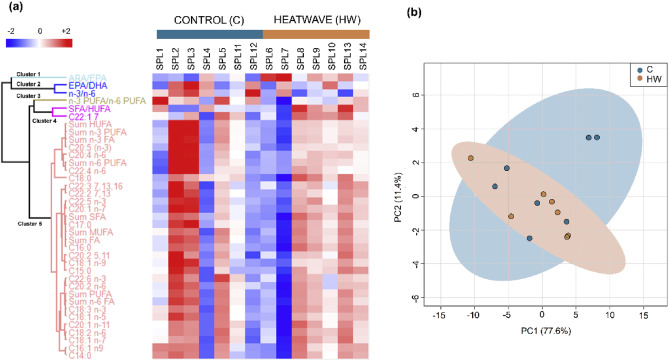 Figure 1a: Heatmap of fatty acid profiles under control vs. heatwave conditions.
Figure 1a: Heatmap of fatty acid profiles under control vs. heatwave conditions.
The study demonstrates H. diversicolor's resilience to prolonged heatwaves. Thanks to Creative Proteomics' high-resolution MLCFA profiling
Publication
Here are some publications in Fatty Acids research from our clients:

- Proteolytic activation of fatty acid synthase signals pan-stress resolution. Nature Metabolism. https://doi.org/10.1038/s42255-023-00939-z
- B cell-intrinsic epigenetic modulation of antibody responses by dietary fiber-derived short-chain fatty acids. Nature Communications. https://doi.org/10.1038/s41467-019-13603-6
- Prospective randomized, double-blind, placebo-controlled study of a standardized oral pomegranate extract on the gut microbiome and short-chain fatty acids. Foods. https://doi.org/10.3390/foods13010015
- Fatty Acid and Antioxidant Profile of Eggs from Pasture-Raised Hens Fed a Corn- and Soy-Free Diet and Supplemented with Grass-Fed Beef Suet and Liver. Foods. https://doi.org/10.3390/foods11213404
